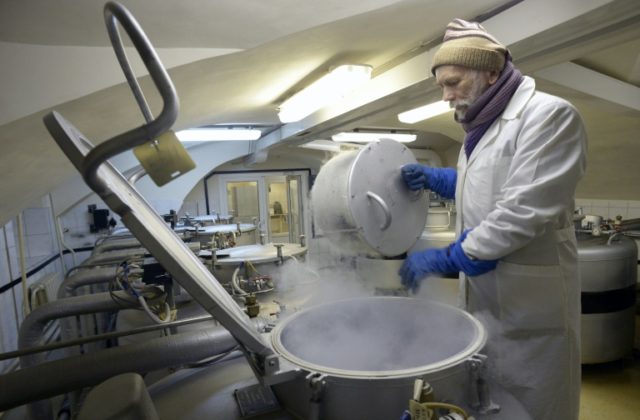Saint Petersburg (AFP) – Stacked high beneath vaulted ceilings in a tsarist-era building, cabinets store the seeds of thousands of plant varieties, many long gone from their original areas of habitat or cultivation.
Staff in white lab coats carefully ensure other samples in the unique seed bank in Saint Petersburg are kept frozen so they are capable of germinating for 50 years.
The Russian institute, established a century ago by a visionary botanist Nikolai Vavilov, has preserved thousands of forgotten plants from the ravages of war and industrialisation.
With climate change, industrial agriculture and globalisation now posing new threats to the world’s biodiversity, the role of the Institute of Plant Genetic Resources is more important than ever.
“In Europe, local varieties have been lost almost entirely due to World War II and industrialisation,” the institute’s director Nikolai Dzyubenko said during a visit last month.
“Local species that remained after the war were destroyed by more productive varieties imported from the United States.”
“But thanks to our collection, the world still has a chance to rediscover the forgotten species.”
The institute’s collection of 345,000 varieties does not just include European grain crops but many more exotic plant species such as Ethiopian wheat, which disappeared following civil wars in the 1970s.
The government of Ethiopia later asked the Soviet Union to send seeds from samples collected during an expedition in 1930 by the institute’s founder and was able to reintroduce the wheat in the country, said agronomist Igor Loskutov, who teaches at the institute.
– Banned and arrested –
Born in 1887, Vavilov was a botanist and one of Russia’s first geneticists. He went on trips all over the world to visit centres of cultivation and added some 250,000 plant samples to the collection.
In the Joseph Stalin era, Vavilov and many other geneticists were prosecuted and their work banned as the Soviet leader supported a young agronomist Trofim Lysenko, whose ideas have since been discredited as pseudo-science.
Although internationally respected and head of the Soviet Agricultural Academy for six years, Vavilov was arrested in 1940 in a probe based on fabricated evidence that he was seeking to undermine Soviet agriculture.
He died of malnutrition in prison three years later and his name was erased from Soviet science until Stalin’s successor Nikita Khrushchev, also a supporter of Lysenko, lost political power and Vavilov was rehabilitated under Leonid Brezhnev in the 1960s.
An enormous portrait of Vavilov now hangs proudly in the institute, while Russia’s Institute of General Genetics in Moscow also bears his name.
The collection miraculously survived World War II and particularly the Siege of Leningrad (now Saint Petersburg), when starving scientists kept guard over the vast seed stocks to prevent them being eaten during food shortages.
– ‘Chasing genes’ –
Eighty percent of the seeds in the collection are the only remaining samples of the varieties in the world.
In October, the institute sent 30 samples of lost varieties to agronomists in France.
In his most active years between 1921 and 1940, Vavilov headed expeditions to 64 countries to collect seeds from both wild and cultivated varieties of plants.
“He and his colleagues were literally chasing genes,” said Loskutov.
“He wasn’t interested in exotic plants, but in plant biodiversity, the local species. That is the main scientific significance of our collection.”
Part of the seed collection now fills three rooms of a large building, which housed a government ministry prior to the 1917 Revolution and is now the institute’s headquarters.
One room, measuring about 50 square metres (538 square feet), has the seeds stored in tiny metal boxes at room temperature, much as in Vavilov’s time some 70 years ago.
“It doesn’t look very modern, but it’s very secure,” Loskutov said, of the towering antique wooden cabinets.
“The collection here does not depend on any electricity or equipment.” Stored in such conditions, a seed can keep for no more than five or seven years.
Two other rooms contain seeds and grafts that are kept frozen in metal vats by employees in lab coats and warm hats. These can germinate for 50 years.
The seeds have to be regularly regenerated: every year, 10 percent of the collection’s samples are planted at the institute’s field stations around the country, including beyond the Arctic Circle, where its assortment of global potato varieties is kept.
After plants grow, new seeds are collected and restored in a never-ending process.
“Against all the odds, the scientists in the institute have maintained this collection until our time,” said Loskutov, as he pointed to a gallery of portraits of the 28 employees who died of hunger during the Siege of Leningrad despite having access to the grain.
“They sacrificed their lives for this.”

COMMENTS
Please let us know if you're having issues with commenting.